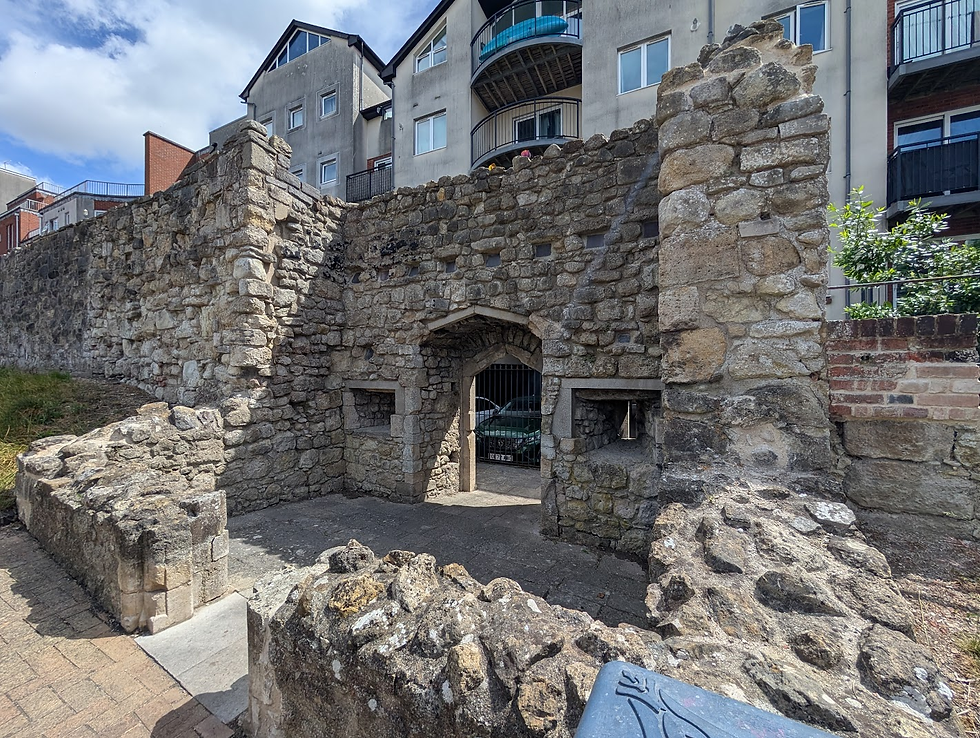Southampton : God's House Tower and the Walls
- chirp54
- May 30
- 2 min read
A lovely sunny day found us visiting God's House Tower, built in the late 13th century.

It gets its name from its close proximity to God's House Hospital, a refuge for travelers. It was a simple gatehouse into the town of Southampton and was originally known as the Saltmarsh Gate, as it led to marshlands outside the town. After the French raid of 1338, the gateway was reinforced as a part of the buildup of the city's defenses. It now serves as arts and heritage center.

There isn't a lot of history about the tower on display but there is a wonderful banner that shows a timeline of notable events in Southampton, from the Norman Conquest in 1066 through the Black Death in 1348, the Pilgrims' departure from Southampton in 1620, prisoners' transportation to Australia from Southampton starting in 1787, the sinking of the Titanic in 1912, right up through God's House Tower being used as a museum of archeology and its place today as a heritage center.
On the second level of the tower, there are signs that tell stories of various townspeople during the 1500s which, I suppose, are meant to give an idea of daily life in the city.
Up on the roof, a glass wall shows what you would have been able to see from the roof in 1620. (No extra charge for the pigeons.)

There's also a timeline that shows the history and fates of some of the notable ships that sailed out of Southampton including this particularly grisly, but memorable, one:


It was interesting but less than impressive, especially if you've ever visited the Museum of Natural History in London.
From God's House Tower, I started walking the walls that adjoined the tower.

The juxtaposition of the ancient walls and modern houses was striking.


It's funny how modern buildings occasionally seem to pop up in the middle of the ancient walls.

Can you see the square holes in the top of the arch? These are the murder holes referred to on the plaque. Invaders would be trapped within the arch when the portcullises (gates) would be lowered - you can see the grooves where they would be. Soldiers above would then pour boiling water or oil or hot sand down the hole, to murderous effect.

Along one of the walls there's an old stone trough for horses with a verse from The Ancient Mariner by Samuel Taylor Coleridge.

There's a reproduction of the skeleton of a medieval boat

and a replica of a 14th century cargo ship.


The arches in the walls were once the entrances to warehouse where wine, wool, and other valuable goods would have been kept before the raids of 1338. The king ordered these arches to be blocked during the fortification of the walls.


I loved this name:


As I walked the walls I had to keep reminding myself that I was looking at, and touching, structures that have been in place for around 700 years. It's just remarkable.
















Wonderful photos, Bethany. Thank you. I love seeing the new and old right next to each other.